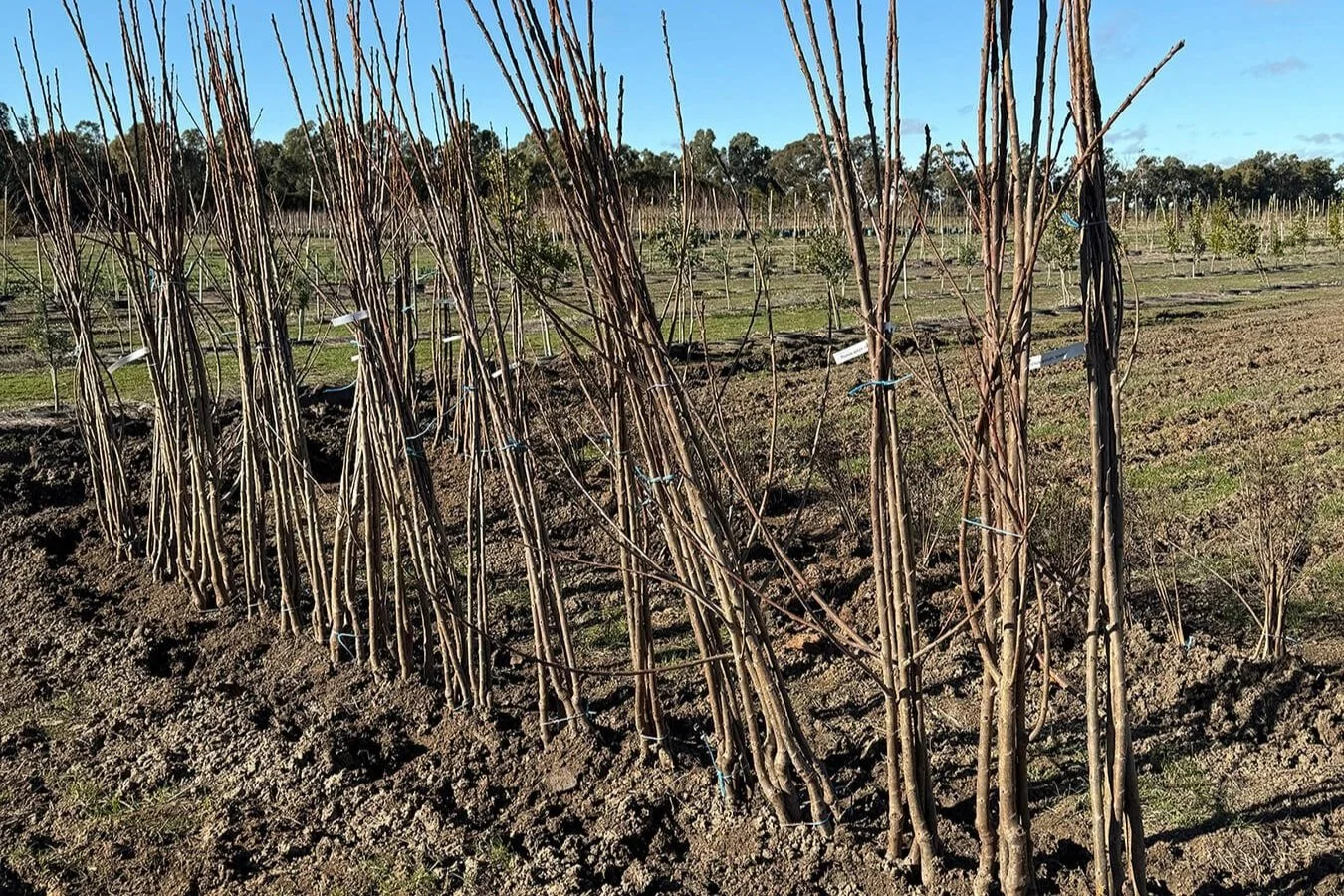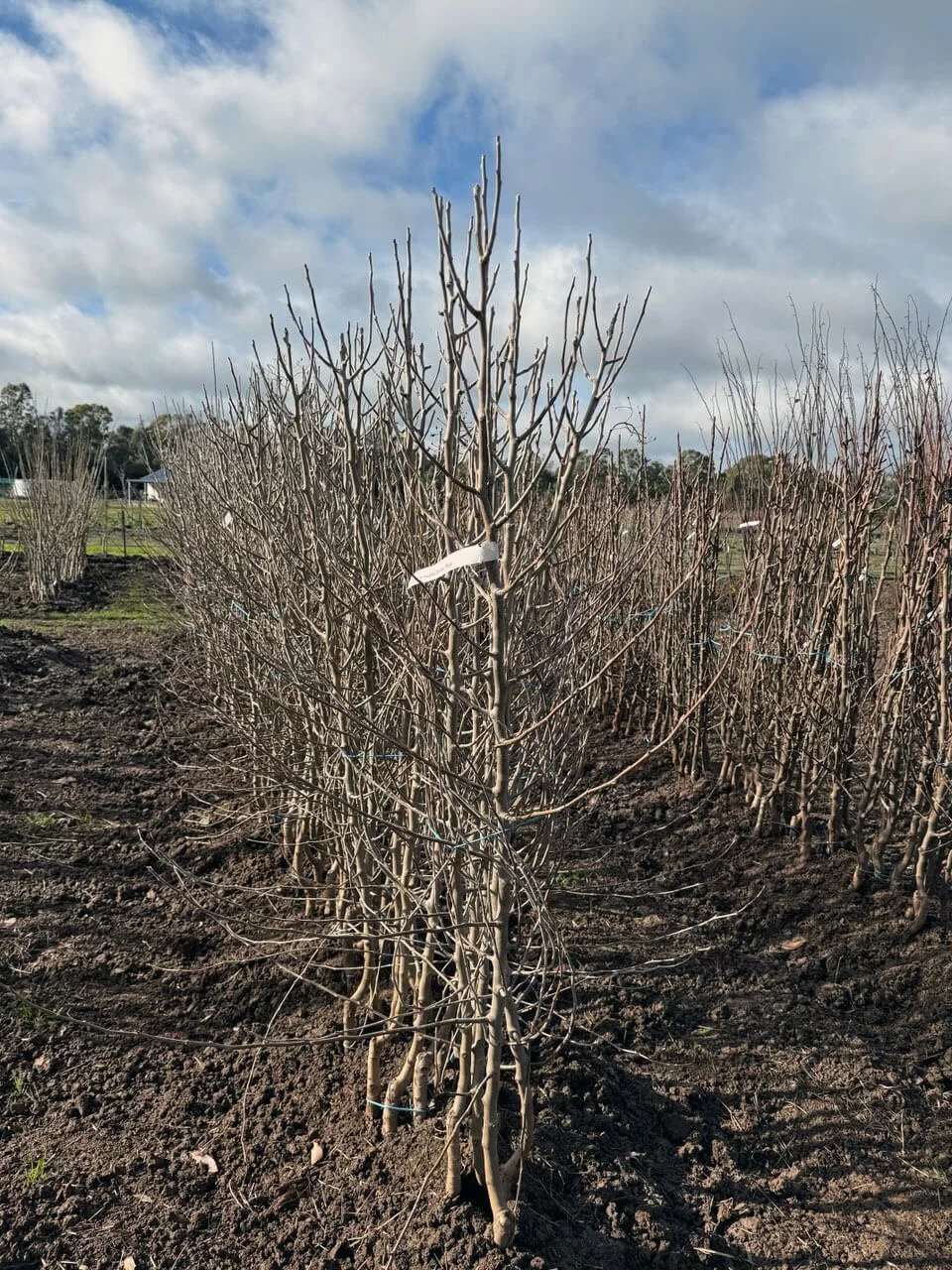Top 5 bare root trees for commercial projects this winter
Why these proven performers are our best-sellers this season.
Winter is upon us, which makes it prime time for bare root planting. It’s the season that offers better root establishment, less transplant shock, and a smart opportunity to stock up on premium trees at a reduced price.
At Arboretum Farm, we grow thousands of trees each year for councils, landscapers, and brokers across Victoria and beyond, and our top-selling bare root stock shows what’s working best across commercial sites.
If you’re planning a project this winter (or even securing stock for spring), these five trees are in high demand. Each is selected for form, structure, and performance, and they’re ready to be lifted and delivered.
1. Betula pendula (Silver Birch)
Striking form for streetscapes and large plantings
Silver Birch remains a consistent favourite among developers and designers seeking to enhance urban developments with a sense of maturity and seasonal change. With its elegant white bark, graceful canopy, and autumnal colour, this is a reliable tree for cooler climates and large-scale installations.
Best use: Streetscapes, parks, subdivisions, and high-visibility residential developments
Size available: Grade 1 (1.9–2m), Grade 2 (1.4–1.6m)
Why it sells: Strong visual impact and high survivability in bare root form
Pro tip: Plant in groups for maximum landscape effect.
Note: The Silver Birch is a potential allergen tree, and pollen causes an inhalant allergy in about 20% of the population.
2. Lagerstroemia 'Natchez' (Crepe Myrtle)
Year-round interest in a compact form
Lagerstroemia ‘Natchez’ is a go-to for smaller sites that still require seasonal drama. Known for its white summer flowers, deep green foliage, and brilliant autumn tones, it also offers attractive bark as it matures. This makes it an ideal choice for projects needing extended visual interest with a smaller footprint.
Best use: Streetscapes, commercial precincts, courtyard developments
Size available: 1.4–1.6m
Why it sells: Compact size, long flowering period, low maintenance
Pro tip: Works well in clusters or as feature trees in pedestrian zones.
3. Pyrus calleryana ‘Cleveland Select’ (Grafted)
Symmetrical shape with broad commercial appeal
With its upright habit, lush foliage, and spring blossoms, ‘Cleveland Select’ is one of the most versatile ornamental pears for commercial settings. It’s widely used in civic landscapes, retail precincts, and new housing estates thanks to its consistent form and excellent cold hardiness.
Best use: Median strips, commercial entries, educational campuses
Sizes available: Grade 1 (1.7–1.8m), Grade 2 (1.5–1.6m)
Why it sells: Predictable form, seasonal appeal, excellent resilience
Pro tip: Combine with other Pyrus varieties for multi-season performance.
4. Pyrus nivalis (Snow Pear)
Hardy, silver-toned foliage with year-round structure
Pyrus nivalis is a standout for its tough nature and silvery foliage that holds structure year-round. It’s becoming increasingly popular on large public landscapes and commercial developments where low-maintenance, high-impact planting is required. The snow pear performs well in poor soils and responds well to pruning.
Best use: Public open space, windbreaks, mixed tree avenues
Size available: 1.3–1.6m
Why it sells: Drought-hardy, striking foliage, excellent form
Pro tip: Use to break up large areas of green or as a contrast to denser canopies.
5. Pyrus calleryana ‘Winter Glow’
Late-season colour and strong site tolerance
For landscapes that need standout autumn and winter colour, ‘Winter Glow’ is ideal. With its late-season foliage and strong branch structure, it’s great for high-traffic commercial areas that benefit from visual appeal well into winter. It’s tolerant of a wide range of site conditions, making it a great all-rounder.
Best use: Large-scale planting, roadside projects, commercial frontages
Size available: 1.8m
Why it sells: Vibrant late colour, structural resilience, low maintenance
Pro tip: Plant in staggered groupings to maximise seasonal colour impact
Plan Ahead – These Trees Don’t Stay in Stock
Bare root season is short — and these trees are moving quickly. With many of our clients ordering well in advance to secure stock for spring, we recommend getting in touch now to check availability.
Need help choosing the right mix for your project? We’re happy to provide practical advice on species, soil compatibility, and long-term performance.



